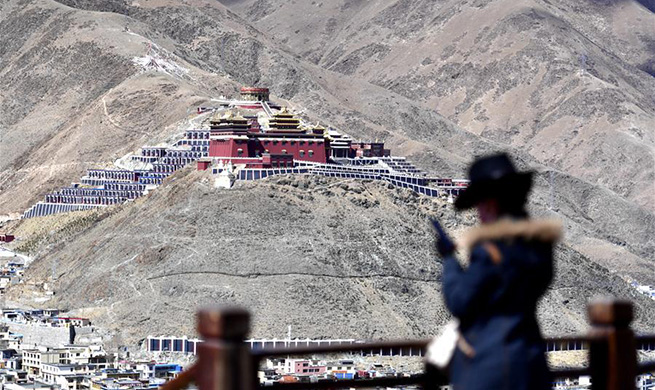WASHINGTON, April 15 (Xinhua) -- NASA's plant-hunting spacecraft launched last year discovered an Earth-sized planet and a warm sub-Neptune-sized one in a nearby star system.
The study published on Monday in the journal The Astrophysical Journal Letters reported the Earth-sized planet called HD 21749c that takes eight days to orbit its host star. The host star of those two planets has about 80 percent of the mass of the Sun and is about 53 light-years distant from Earth.
The Transiting Exoplanet Survey Satellite (TESS), launched on April 18, 2018, is NASA's latest satellite to hunt for planets outside our solar system. It will monitor the brightness of more than 200,000 stars over a period of two years, eyeing temporary drops in brightness caused by planetary transits.
Also, a tool called the Planet Finder Spectrograph (PFS) installed in a observatory in Chile has been used to confirm the planetary nature of the TESS signal and to measure the mass of the newly discovered exoplanets.
"Measuring the exact mass and composition of such a small planet will be important for comparing HD 21749c to Earth," said Sharon Wang, an astronomer from Carnegie Institution of Washington.
Astronomers are able to measure the masses, atmospheric compositions, and other properties of many smaller exoplanets for the first time, thank to TESS and PFS.
"For stars that are very close by and very bright, we expected to find up to a couple dozen Earth-sized planets," said Johanna Teske, also a researcher from Carnegie.
"This would be our first one, and it's a milestone for TESS. It sets the path for finding smaller planets around even smaller stars, and those planets may potentially be habitable," said Teske.
The astronomers also discovered in the star system a sibling planet HD 21749b, about 23 times Earth's mass, but less massive than Neptune. It has a radius of about 2.7 times Earth's.
HD 21749b has an orbit that takes about 36 days to complete, which is the longest period of any of the TESS discoveries published so far, according to the study.
Its density indicates the planet has substantial atmosphere but it is not rocky, so it may help astronomers understand the composition and evolution of cooler sub-Neptune planet atmospheres.
Small exoplanets are common in our galaxy, but there is still much to learn about their diversity, according to the researchers.
TESS will study over 90 percent of the sky and transmit observations back to Earth every 13.5 days.

















